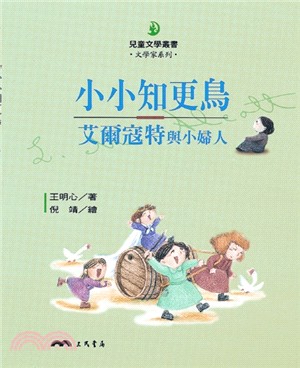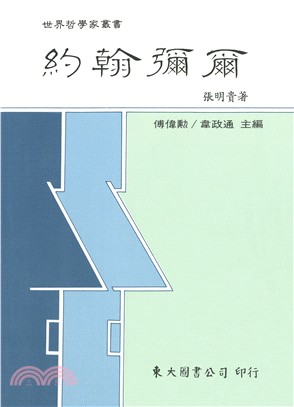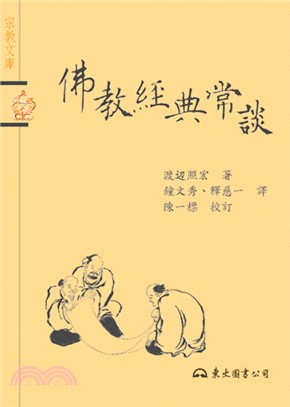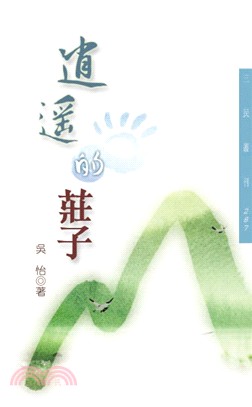Milk Processing And Quality Management
- ISBN13:9781405145305
- 出版社:John Wiley & Sons Inc
- 作者:Tamime
- 裝訂/頁數:精裝/344頁
- 出版日:2008/12/19
定 價:NT$ 13588 元
優惠價:90 折 12229 元
若需訂購本書,請電洽客服 02-25006600[分機130、131]。
相關商品
商品簡介
作者簡介
名人/編輯推薦
目次
商品簡介
The Society of Dairy Technology (SDT) has joined with Wiley-Blackwell to produce a series of technical dairy-related handbooks providing an invaluable resource for all those involved in the dairy industry; from practitioners to technologists working in both traditional and modern large-scale dairy operations.
The fifth volume in the series, Milk Processing and Quality Management, provides timely and comprehensive guidance on the processing of liquid milks by bringing together contributions from leading experts around the globe. This important book covers all major aspects of hygienic milk production, storage and processing and other key topics such as:
Microbiology of raw and market milks
Quality control
International legislation
Safety
HACCP in milk processing
All those involved in the dairy industry including food scientists, food technologists, food microbiologists, food safety enforcement personnel, quality control personnel, dairy industry equipment suppliers and food ingredient companies should find much of interest in this commercially important book which will also provide libraries in dairy and food research establishments with a valuable reference for this important area.
The fifth volume in the series, Milk Processing and Quality Management, provides timely and comprehensive guidance on the processing of liquid milks by bringing together contributions from leading experts around the globe. This important book covers all major aspects of hygienic milk production, storage and processing and other key topics such as:
Microbiology of raw and market milks
Quality control
International legislation
Safety
HACCP in milk processing
All those involved in the dairy industry including food scientists, food technologists, food microbiologists, food safety enforcement personnel, quality control personnel, dairy industry equipment suppliers and food ingredient companies should find much of interest in this commercially important book which will also provide libraries in dairy and food research establishments with a valuable reference for this important area.
作者簡介
Dr Adnan Tamime is a Dairy Science and Technology Consultant based in Scotland, UK
名人/編輯推薦
"It should be noted that this book is undeniable valuable for the production of safe food of animal origin because, in spite of the implement HACCP system, the incidence of food poisoning does not diminish, which justifies the need to improve these systems." (International Journal of Dairy Technology, February 2011)
“The book is a welcome and overdue replacement for the Pasteurization Manual from the Society of Dairy Technology. It has succeeded in bringing up to date all aspects of quality management of liquid milk. The section on HACCP is well documented and is of considerable practical value. It is a must for all those involved in production of liquid milks, and should become compulsory reading for students and new entrants to the milk and milk products industry.” ( Journal of Dairy Technology, August 2009)
“The book is a welcome and overdue replacement for the Pasteurization Manual from the Society of Dairy Technology. It has succeeded in bringing up to date all aspects of quality management of liquid milk. The section on HACCP is well documented and is of considerable practical value. It is a must for all those involved in production of liquid milks, and should become compulsory reading for students and new entrants to the milk and milk products industry.” ( Journal of Dairy Technology, August 2009)
目次
Chapter 1: On-Farm Hygienic Milk Production.
M.M.M. Vissers and F. Driehuis.
1.1 Introduction.
1.2 Sources of microbial contamination of bulk tank milk.
1.2.1 Background.
1.2.2 Mastitis.
1.2.3 Environment.
1.2.4 Milking equipment.
1.2.5 Microbial growth during milk storage.
1.3 Control of microbial contamination of bulk tank milk.
1.3.1 Good farming practice.
1.3.2 Animal health management.
1.3.3 Control of feed.
1.3.4 Facility hygiene.
1.3.5 Milking operations.
1.3.6 Milking machine design and operations.
1.3.7 Bulk tank design and operations.
1.3.8 Identification of effective control measures.
1.4 Future developments in handling of the milk on the farm.
1.4.1 Concentration of the milk.
1.4.2 Heat-treatment of the milk.
1.4.3 In-/on-line monitoring of bulk tank milk quality.
1.5 Conclusions.
1.6 References.
.
Chapter 2: Properties and Constituents of Cow’s milk.
T. Huppertz and A.L. Kelly.
2.1 Introduction.
2.2 Milk composition.
2.3 Milk constituents.
2.3.1 Lactose.
2.3.2 Milk salts.
2.3.3 Lipids.
2.3.4 Proteins.
2.3.5 Indigenous milk enzymes.
2.4 Heat-induced changes in the physicochemical properties of milk.
2.4.1 pH.
2.4.2 Buffering capacity.
2.4.3 Creaming.
2.5 Heat-induced changes in processing characteristics of milk.
2.5.1 Rennet-induced coagulation.
2.5.2 Acid-induced coagulation.
2.5.3 heat-induced coagulation.
2.6 Relationship between the quality of raw milk and that of the products.
2.7 Conclusions.
2.8 References.
.
Chapter 3: Microbiology of Raw and Market Milks.
V. Touch and H. Deeth.
3.1 Introduction.
3.2 Microflora of raw milk.
3.2.1 Spoilage organisms.
3.2.2 Pathogenic organisms.
3.3. Microflora of pasteurised milk.
3.3.1 Spoilage organisms.
3.3.2 Pathogenic organisms.
3.4 Microflora of UHT milk.
3.4.1 Spoilage organisms.
3.4.2 Pathogenic organisms.
3.5 Microflora of ESL milk.
3.6 Sources of contamination.
3.6.1 Raw milk.
3.6.2 Pasteurised milk.
3.6.3 UHT milk.
3.7 Measures to reduce bacterial contamination of raw and market milks.
3.7.1 Cleaning and sanitation.
3.7.2 Cooling the milk during storage.
3.7.3 Addition of carbon dioxide.
3.7.4 Application of bio-preservatives.
3.7.5 Thermal treatments.
3.7.6 Non-thermal treatments.
3.7.7 Multitarget attack/interactive approach.
3.8 Conclusion.
3.9 References.
.
Chapter 4: Quality Control.
J. Belloque, R. Chicón and I. Recio.
4.1 Introduction.
4.2 Quality control of raw milk.
4.3 Quality control of processed milk.
4.4 Methods of analysis.
4.4.1 Analysis of abnormal milk.
4.4.2 Microbial analysis.
4.4.3 Mastitic milk - somatic cell determination.
4.4.4 Testing for residues compounds.
4.5 Major components analysis.
4.5.1 Protein composition analysis.
4.5.2 Fat composition analysis.
4.5.3 Analysis of other milk components.
4.5.4 Analysis of degradation products formed during milk storage.
4.5.5 Evaluation of heat load.
4.6 Analysis of fraudulent addition of ingredients and authentication.
4.6.1 Addition of water.
4.6.2 Addition of whey proteins.
4.6.3 Addition of non-dairy proteins.
4.6.4 Addition of reconstituted milk.
4.6.5 Substitution of milk from different species of mammals.
4.6.6 Substitution of milk with different feeding or geographical origin.
4.6.7 Mislabelling of fortified and functional milks.
4.7 Conclusion.
4.8 Acknowledgement.
4.9 References.
Chapter 5: Current Legislation of Market Milks.
M. Hickey.
5.1 Introduction.
5.2 European Union (EU) legislation.
5.2.1 Access to EU legislation.
5.2.2 Compositional requirements.
5.2.3 Amendments to existing compositional requirements.
5.2.4 Hygiene and food safety requirements.
5.3 United Kingdom (UK) legislation.
5.3.1 Background.
5.3.2 Present legislation on composition.
5.3.3 Present legislation on hygiene.
5.3.4 The Dairy UK Code of Practice for HTST pasteurisation.
5.3.5 Permitted range of packaging sizes of milk in the UK.
5.4 Irish legislation.
5.4.1 Introduction.
5.4.2 Present legislation on composition.
5.4.3 Present legislation on hygiene.
5.4.4 Range of packaging sizes for fresh drinking milk in Ireland.
5.5 United States of America (USA) legislation.
5.5.1 Background.
5.5.2 Historical details.
5.5.3 The Pasteurised Milk Ordinance and Code of Federal Regulations.
5.5.4 Definitions and standards for milk in the USA.
5.6 The International perspective - Codex Alimentarius.
5.6.1 What is Codex Alimentarius?.
5.6.2 Codex Alimentarius Commission (CAC) membership and structure.
5.6.3 Codex Alimentarius standards.
5.6.4 Codex Alimentarius standards and milk for human consumption.
5.7 Conclusions and possible future developments.
5.8 References.
Chapter 6: The Safety of Raw Liquid Milk.
M. O’Mahony, S. Fanning and P. Whyte.
6.1 Introduction.
6.2 Implication of milk in human disease.
6.3 Microbial hazards in milk.
6.3.1 Salmonella species.
6.3.2 Campylobacter species.
6.3.3 Verocytotoxigenic Escherichis coli.
6.3.4 Enterotocigenic Staphylococcus aureus.
6.3.5 Listeria monocytogenese.
6.3.6 Mycobacterium bovis.
6.3.7 Brucella abortus and Brucella melitensis.
6.4 Chemical contaminants and residues.
6.4.1 Industry derived contaminants.
6.4.2 Biologically derived contaminants.
6.4.3 Pesticides and residues of plant health agrichemicals.
6.4.4 Residues of animal remedies.
6.5 Poorly understood and emerging hazards.
6.5.1 Bovine spongiform encephalopathy (BSE).
6.5.2 Mycobacterium avium subsp. paratuberculosis.
6.5.3 Enterobacter sakazakii.
6.5.4 Antimicrobial resistance.
6.6 Risk management strategies to ensure safety of liquid milk.
6.6.1 Pre-harvest risk management.
6.6.2 Harvest phase risk management.
6.6.3 Post-harvest risk management.
6.7 Summation.
6.8 References.
Chapter 7: Heat Treatment of Milk.
M. J. Lewis and H. C. Deeth.
7.1 Introduction.
7.2 Milk composition.
7.3 React kinetics.
7.4 Principles of heat transfer.
7.5 Thermisation and tyndallisation.
7.6 Pasteurisation.
7.6.1 Introduction and principles.
7.6.2 Methods of pasteurisation.
7.6.3 Factors affecting the quality of pasteurised milk.
7.7 Sterilisation - safety and spoilage considerations.
7.8 In-container sterilisation.
7.9 UHT processing.
7.9.1 Introduction and principles.
7.9.2 Methods of UHT processing.
7.9.3 Factors affecting the quality of UHT milk.
7.9.4 Heat stability, sediment formation and fouling.
7.10 High-temperature processing [extended shelf-life (ESL)].
7.11 Reconstituted and recombined milk products.
7.12 Conclusions.
7.13 References.
7.14 Appendix.
7.14.1 Some heat transfer properties.
7.14.2 Definitions and equations.
Chapter 8: Novel Methods of Milk Processing.
M. Villamiel, M. Schutyser and P. de Jong.
8.1 Introduction.
8.2 Microwaves.
8.2.1 Operating principles.
8.2.2 Effects on product properties.
8.2.3 State of art and opportunities.
8.3 High pressure (HP).
8.3.1 Operating principles.
8.3.2 Effects on product properties.
8.3.3 State of art and opportunities.
8.4 Pulsed electric field (PEF).
8.4.1 Operating principles.
8.4.2 Effects on product properties.
8.4.3 State of art and opportunities.
8.5 Ultrasound.
8.5.1 Operating principles.
8.5.2 Effects on product properties.
8.5.3 State of art and opportunities.
8.6 Microfiltration (MF).
8.6.1 Operating principles.
8.6.2 Effects on product properties.
8.6.3 State of art and opportunities.
8.7 Innovative steam injection (ISI) - a novel heating method.
8.7.1 Operating principles.
8.7.2 Effects on product properties.
8.7.3 State of art and opportunities.
8.8 Combined technologies.
8.8.1 Effect on product properties.
8.8.2 Preservation in the presence of antimicrobials.
8.8.3 State of art and opportunities.
8.9 Computer models for design and implementation of novel milk processing.
methods.
8.9.1 Optimisation of milk processing methods with models.
8.9.2 Availability of models.
8.10 References.
Chapter 9: Hygiene Practices in Liquid Milk Dairies.
A.J. van Asselt and M.C. te Giffel.
9.1 Introduction.
9.2 Principal hazards.
9.2.1 Raw milk.
9.2.2 Pasteurised milk.
9.2.3 Sterilised milk.
9.3 Hygienic processing.
9.3.1 General.
9.3.2 Building construction.
9.3.3 Zoning.
9.3.4 Processing equipment.
9.3.5 Cleaning.
9.3.6 Packaging materials.
9.3.7 Processing aids.
9.4 Monitoring and control.
9.4.1 In-line detection of micro-organisms.
9.4.2 Optimisation of cleaning-in-place procedures.
9.5 Concluding remarks.
9.6 References.
Chapter 10: Hazard Analysis (Appraisal) Critical Control Point (HACCP) in Milk Processing - A Practical Overview.
A. Sayler.
10.1 Introduction.
10.2 General aspects of the benefits of the HACCP system.
10.3 HACCP definitions.
10.4 Implementation and maintenance of the HACCP program.
10.4.1 Commitment by the management.
10.4.2 Letter of endorsement of HACCP.
10.5 Steps to HACCP implementation.
10.5.1 Assemble the HACCP team.
10.5.2 Describe the food and its distribution.
10.5.3 Intended use and consumers of the food.
10.5.4 Develop a flow diagram that describes the process.
10.5.5 Verify the flow diagram.
10.6 Hazard components.
10.6.1 Biological hazards.
10.6.2 Chemical hazards.
10.6.3 Physical hazards.
10.6.4 Potential hazards identified by source.
10.7 Prerequisite programme.
10.7.1 Background.
10.7.2 Prerequisite examples and forms.
10.8 The principles of HACCP plan.
10.8.1 Principle 1 - conduct hazard analysis.
10.8.2 Principle 2 - determine CCPs.
10.8.3 Principle 3 - establishments of critical limits.
10.8.4 Principle 4 - establish monitoring procedures.
10.8.5 Principle 5 - establish corrective actions.
10.8.6 Principle 6 - establish verification procedures.
10.8.7 Principle 7 - records.
10.9 Internal and external auditing in the HACCP process.
10.10 Overview and summary.
Chapter 11: Sensory Profiling of Market Milks.
E. Molina, L. Amigo and A. Quirós.
11.1 Introduction.
11.2 Sensory properties of market milks.
11.2.1 Sensory evaluation of milk.
11.2.2 Sensory attributes of flavour defects.
11.2.3 Other factors influencing the sensory properties.
11.3 Different types of market milks.
11.3.1 Raw and heat processed milks.
11.3.2 Whole and fat-reduced milks.
11.3.3 Enriched and modified milks.
11.3.4 Other types of milks.
11.4 Conclusion.
11.5 References
M.M.M. Vissers and F. Driehuis.
1.1 Introduction.
1.2 Sources of microbial contamination of bulk tank milk.
1.2.1 Background.
1.2.2 Mastitis.
1.2.3 Environment.
1.2.4 Milking equipment.
1.2.5 Microbial growth during milk storage.
1.3 Control of microbial contamination of bulk tank milk.
1.3.1 Good farming practice.
1.3.2 Animal health management.
1.3.3 Control of feed.
1.3.4 Facility hygiene.
1.3.5 Milking operations.
1.3.6 Milking machine design and operations.
1.3.7 Bulk tank design and operations.
1.3.8 Identification of effective control measures.
1.4 Future developments in handling of the milk on the farm.
1.4.1 Concentration of the milk.
1.4.2 Heat-treatment of the milk.
1.4.3 In-/on-line monitoring of bulk tank milk quality.
1.5 Conclusions.
1.6 References.
.
Chapter 2: Properties and Constituents of Cow’s milk.
T. Huppertz and A.L. Kelly.
2.1 Introduction.
2.2 Milk composition.
2.3 Milk constituents.
2.3.1 Lactose.
2.3.2 Milk salts.
2.3.3 Lipids.
2.3.4 Proteins.
2.3.5 Indigenous milk enzymes.
2.4 Heat-induced changes in the physicochemical properties of milk.
2.4.1 pH.
2.4.2 Buffering capacity.
2.4.3 Creaming.
2.5 Heat-induced changes in processing characteristics of milk.
2.5.1 Rennet-induced coagulation.
2.5.2 Acid-induced coagulation.
2.5.3 heat-induced coagulation.
2.6 Relationship between the quality of raw milk and that of the products.
2.7 Conclusions.
2.8 References.
.
Chapter 3: Microbiology of Raw and Market Milks.
V. Touch and H. Deeth.
3.1 Introduction.
3.2 Microflora of raw milk.
3.2.1 Spoilage organisms.
3.2.2 Pathogenic organisms.
3.3. Microflora of pasteurised milk.
3.3.1 Spoilage organisms.
3.3.2 Pathogenic organisms.
3.4 Microflora of UHT milk.
3.4.1 Spoilage organisms.
3.4.2 Pathogenic organisms.
3.5 Microflora of ESL milk.
3.6 Sources of contamination.
3.6.1 Raw milk.
3.6.2 Pasteurised milk.
3.6.3 UHT milk.
3.7 Measures to reduce bacterial contamination of raw and market milks.
3.7.1 Cleaning and sanitation.
3.7.2 Cooling the milk during storage.
3.7.3 Addition of carbon dioxide.
3.7.4 Application of bio-preservatives.
3.7.5 Thermal treatments.
3.7.6 Non-thermal treatments.
3.7.7 Multitarget attack/interactive approach.
3.8 Conclusion.
3.9 References.
.
Chapter 4: Quality Control.
J. Belloque, R. Chicón and I. Recio.
4.1 Introduction.
4.2 Quality control of raw milk.
4.3 Quality control of processed milk.
4.4 Methods of analysis.
4.4.1 Analysis of abnormal milk.
4.4.2 Microbial analysis.
4.4.3 Mastitic milk - somatic cell determination.
4.4.4 Testing for residues compounds.
4.5 Major components analysis.
4.5.1 Protein composition analysis.
4.5.2 Fat composition analysis.
4.5.3 Analysis of other milk components.
4.5.4 Analysis of degradation products formed during milk storage.
4.5.5 Evaluation of heat load.
4.6 Analysis of fraudulent addition of ingredients and authentication.
4.6.1 Addition of water.
4.6.2 Addition of whey proteins.
4.6.3 Addition of non-dairy proteins.
4.6.4 Addition of reconstituted milk.
4.6.5 Substitution of milk from different species of mammals.
4.6.6 Substitution of milk with different feeding or geographical origin.
4.6.7 Mislabelling of fortified and functional milks.
4.7 Conclusion.
4.8 Acknowledgement.
4.9 References.
Chapter 5: Current Legislation of Market Milks.
M. Hickey.
5.1 Introduction.
5.2 European Union (EU) legislation.
5.2.1 Access to EU legislation.
5.2.2 Compositional requirements.
5.2.3 Amendments to existing compositional requirements.
5.2.4 Hygiene and food safety requirements.
5.3 United Kingdom (UK) legislation.
5.3.1 Background.
5.3.2 Present legislation on composition.
5.3.3 Present legislation on hygiene.
5.3.4 The Dairy UK Code of Practice for HTST pasteurisation.
5.3.5 Permitted range of packaging sizes of milk in the UK.
5.4 Irish legislation.
5.4.1 Introduction.
5.4.2 Present legislation on composition.
5.4.3 Present legislation on hygiene.
5.4.4 Range of packaging sizes for fresh drinking milk in Ireland.
5.5 United States of America (USA) legislation.
5.5.1 Background.
5.5.2 Historical details.
5.5.3 The Pasteurised Milk Ordinance and Code of Federal Regulations.
5.5.4 Definitions and standards for milk in the USA.
5.6 The International perspective - Codex Alimentarius.
5.6.1 What is Codex Alimentarius?.
5.6.2 Codex Alimentarius Commission (CAC) membership and structure.
5.6.3 Codex Alimentarius standards.
5.6.4 Codex Alimentarius standards and milk for human consumption.
5.7 Conclusions and possible future developments.
5.8 References.
Chapter 6: The Safety of Raw Liquid Milk.
M. O’Mahony, S. Fanning and P. Whyte.
6.1 Introduction.
6.2 Implication of milk in human disease.
6.3 Microbial hazards in milk.
6.3.1 Salmonella species.
6.3.2 Campylobacter species.
6.3.3 Verocytotoxigenic Escherichis coli.
6.3.4 Enterotocigenic Staphylococcus aureus.
6.3.5 Listeria monocytogenese.
6.3.6 Mycobacterium bovis.
6.3.7 Brucella abortus and Brucella melitensis.
6.4 Chemical contaminants and residues.
6.4.1 Industry derived contaminants.
6.4.2 Biologically derived contaminants.
6.4.3 Pesticides and residues of plant health agrichemicals.
6.4.4 Residues of animal remedies.
6.5 Poorly understood and emerging hazards.
6.5.1 Bovine spongiform encephalopathy (BSE).
6.5.2 Mycobacterium avium subsp. paratuberculosis.
6.5.3 Enterobacter sakazakii.
6.5.4 Antimicrobial resistance.
6.6 Risk management strategies to ensure safety of liquid milk.
6.6.1 Pre-harvest risk management.
6.6.2 Harvest phase risk management.
6.6.3 Post-harvest risk management.
6.7 Summation.
6.8 References.
Chapter 7: Heat Treatment of Milk.
M. J. Lewis and H. C. Deeth.
7.1 Introduction.
7.2 Milk composition.
7.3 React kinetics.
7.4 Principles of heat transfer.
7.5 Thermisation and tyndallisation.
7.6 Pasteurisation.
7.6.1 Introduction and principles.
7.6.2 Methods of pasteurisation.
7.6.3 Factors affecting the quality of pasteurised milk.
7.7 Sterilisation - safety and spoilage considerations.
7.8 In-container sterilisation.
7.9 UHT processing.
7.9.1 Introduction and principles.
7.9.2 Methods of UHT processing.
7.9.3 Factors affecting the quality of UHT milk.
7.9.4 Heat stability, sediment formation and fouling.
7.10 High-temperature processing [extended shelf-life (ESL)].
7.11 Reconstituted and recombined milk products.
7.12 Conclusions.
7.13 References.
7.14 Appendix.
7.14.1 Some heat transfer properties.
7.14.2 Definitions and equations.
Chapter 8: Novel Methods of Milk Processing.
M. Villamiel, M. Schutyser and P. de Jong.
8.1 Introduction.
8.2 Microwaves.
8.2.1 Operating principles.
8.2.2 Effects on product properties.
8.2.3 State of art and opportunities.
8.3 High pressure (HP).
8.3.1 Operating principles.
8.3.2 Effects on product properties.
8.3.3 State of art and opportunities.
8.4 Pulsed electric field (PEF).
8.4.1 Operating principles.
8.4.2 Effects on product properties.
8.4.3 State of art and opportunities.
8.5 Ultrasound.
8.5.1 Operating principles.
8.5.2 Effects on product properties.
8.5.3 State of art and opportunities.
8.6 Microfiltration (MF).
8.6.1 Operating principles.
8.6.2 Effects on product properties.
8.6.3 State of art and opportunities.
8.7 Innovative steam injection (ISI) - a novel heating method.
8.7.1 Operating principles.
8.7.2 Effects on product properties.
8.7.3 State of art and opportunities.
8.8 Combined technologies.
8.8.1 Effect on product properties.
8.8.2 Preservation in the presence of antimicrobials.
8.8.3 State of art and opportunities.
8.9 Computer models for design and implementation of novel milk processing.
methods.
8.9.1 Optimisation of milk processing methods with models.
8.9.2 Availability of models.
8.10 References.
Chapter 9: Hygiene Practices in Liquid Milk Dairies.
A.J. van Asselt and M.C. te Giffel.
9.1 Introduction.
9.2 Principal hazards.
9.2.1 Raw milk.
9.2.2 Pasteurised milk.
9.2.3 Sterilised milk.
9.3 Hygienic processing.
9.3.1 General.
9.3.2 Building construction.
9.3.3 Zoning.
9.3.4 Processing equipment.
9.3.5 Cleaning.
9.3.6 Packaging materials.
9.3.7 Processing aids.
9.4 Monitoring and control.
9.4.1 In-line detection of micro-organisms.
9.4.2 Optimisation of cleaning-in-place procedures.
9.5 Concluding remarks.
9.6 References.
Chapter 10: Hazard Analysis (Appraisal) Critical Control Point (HACCP) in Milk Processing - A Practical Overview.
A. Sayler.
10.1 Introduction.
10.2 General aspects of the benefits of the HACCP system.
10.3 HACCP definitions.
10.4 Implementation and maintenance of the HACCP program.
10.4.1 Commitment by the management.
10.4.2 Letter of endorsement of HACCP.
10.5 Steps to HACCP implementation.
10.5.1 Assemble the HACCP team.
10.5.2 Describe the food and its distribution.
10.5.3 Intended use and consumers of the food.
10.5.4 Develop a flow diagram that describes the process.
10.5.5 Verify the flow diagram.
10.6 Hazard components.
10.6.1 Biological hazards.
10.6.2 Chemical hazards.
10.6.3 Physical hazards.
10.6.4 Potential hazards identified by source.
10.7 Prerequisite programme.
10.7.1 Background.
10.7.2 Prerequisite examples and forms.
10.8 The principles of HACCP plan.
10.8.1 Principle 1 - conduct hazard analysis.
10.8.2 Principle 2 - determine CCPs.
10.8.3 Principle 3 - establishments of critical limits.
10.8.4 Principle 4 - establish monitoring procedures.
10.8.5 Principle 5 - establish corrective actions.
10.8.6 Principle 6 - establish verification procedures.
10.8.7 Principle 7 - records.
10.9 Internal and external auditing in the HACCP process.
10.10 Overview and summary.
Chapter 11: Sensory Profiling of Market Milks.
E. Molina, L. Amigo and A. Quirós.
11.1 Introduction.
11.2 Sensory properties of market milks.
11.2.1 Sensory evaluation of milk.
11.2.2 Sensory attributes of flavour defects.
11.2.3 Other factors influencing the sensory properties.
11.3 Different types of market milks.
11.3.1 Raw and heat processed milks.
11.3.2 Whole and fat-reduced milks.
11.3.3 Enriched and modified milks.
11.3.4 Other types of milks.
11.4 Conclusion.
11.5 References
主題書展
更多主題書展
更多書展本週66折
您曾經瀏覽過的商品
購物須知
外文書商品之書封,為出版社提供之樣本。實際出貨商品,以出版社所提供之現有版本為主。部份書籍,因出版社供應狀況特殊,匯率將依實際狀況做調整。
無庫存之商品,在您完成訂單程序之後,將以空運的方式為你下單調貨。為了縮短等待的時間,建議您將外文書與其他商品分開下單,以獲得最快的取貨速度,平均調貨時間為1~2個月。
為了保護您的權益,「三民網路書店」提供會員七日商品鑑賞期(收到商品為起始日)。
若要辦理退貨,請在商品鑑賞期內寄回,且商品必須是全新狀態與完整包裝(商品、附件、發票、隨貨贈品等)否則恕不接受退貨。
























